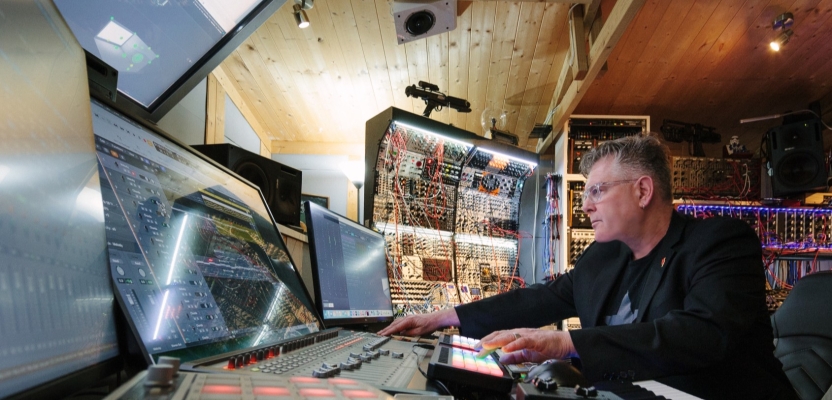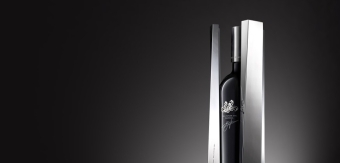Sonic branding. It’s something all creatives are familiar with, and something we can certainly appreciate the importance of. We’re all aware of how great sound can make or break a product, but something rarely talked about is how much of an impact that different formats can have on the sound. Sefi Carmel, award-winning producer and CEO at music licensing blockchain agency SphereTrax, explores the potential impact of Dolby Atmos on the future of sonic branding and advertising.
Surround sound and immersive formats have been gaining more and more traction in recent times, and it’s no longer just cinemas and theatres where people are experiencing it. In fact, according to Dolby, there are already more than 1.5 billion Atmos-enabled devices in the hands of consumers worldwide - which means Dolby Atmos is far more accessible than you might think, and consumers can enjoy it without the need for a large, expensive speaker setup. 87% of music is listened to on headphones, which illustrates just how huge the potential is for reaching audiences in enhanced sonic environments, enabled with optimum sound equipped devices.

The Mandalorian
Dolby Atmos is already becoming a sought-after format for film and TV, with companies like Netflix, Apple and Disney all now making it a requirement for their deliverables. New shows like The Mandalorian are now all mixed in Atmos, showing that this format has gone far beyond the big screen. You can now stream films and TV shows in Atmos via your Apple TV, and listen to your favourite tunes mixed in Atmos on Apple Music. The world of advertising is beginning to see a shift as well. For example, we at SphereTrax deliver licensed music in Dolby Atmos which is especially useful not just for film and TV but for trailers as well as commercials and videogames.
For example, the Team at Soundtrack Creation did the sound design for the Harry Potter and the Cursed Child trailer in Dolby Atmos, while the music, composed by the fabulous David Tregoning, was then mixed in Atmos by the team at SphereTrax. The final mix was done at Grand Central Studios by the multi award winning Raj Sehgal. The result was an immersive advertising experience which really took the content to the next level.
More and more people are beginning to adopt Atmos into their projects in new and exciting ways, so it seems it’s a format that’s here to stay, and producers and marketers alike must adapt and embrace it in order to future-proof their content for the years to come. It’s only a matter of time before ads for TV will also be mixed in Atmos.
As we see this exciting format begin to spill over into advertising, more trailers and high-end cinema ads are opting for a mix in Dolby Atmos. Soon, you would expect this to be a requirement here as well. After all, who would want to listen to their regular ad played right after an incredible Dolby-Atmos mix, leaving it sounding small and flat in comparison.

Mixing an ad in Atmos has several other benefits compared to stereo and surround formats. One of the main ones is its versatility; within one file you can include all the mix-downs you need. If you listen to an Atmos file through a 5.1 setup, you will get a 5.1 mix. Listen to it through stereo speakers, get a binaural stereo mix. And so on. And whilst you might think you would lose the 3D effect with all of these mix-downs, this isn’t necessarily the case.
If you listen to an Atmos file in headphones you get a binaural mix that can still give the listener a very immersive experience. This is all thanks to the Atmos processor, which can decode all the required information, and play back the same file on many different systems, scaling up according to the number of speakers available in the playback system, so there is no need to render a whole host of different deliverables for different formats. Another advantage of this is that your splits and stems are generally already encoded into the file for you, as music, SFX and VO are often split into several beds in the Atmos file.

Sefi Carmel
More obviously, adding a third dimension to your audio is always going to make things sound more interesting! However, a common question arises: does the incorporation of additional speakers in an Atmos setup limit the available headroom for manipulation? To address this, it is helpful to delve into the historical context of loudness."
For years mixers would compete with each other to try and get their ads mixed as loud as possible. This was colloquially known as the Loudness War. Of course this led to people leaving the cinema feeling like their ears were bleeding, so complaints were made and eventually standards were put in place to help prevent this. There’s a bunch of different loudness specs out there, but for cinemas here in the UK the important numbers are that commercials can’t go above 82db Leq, and trailers can’t go above 85db Leq.
Immersive audio in commercials is, as of yet, a sparsely tapped goldmine. Those who pave the way are the pioneers, and those that delay may find themselves playing catch-up in this ever-evolving world. For those brave enough to try it, the opportunity is there for the taking.






